After 17 years in the commercial web industry, last year I transitioned into serving Adventist organizations. One of my first tasks was to understand the ecosystem better.
At first glance, our ecosystem can appear to be tightly integrated in a similar fashion to the Catholic or Mormon systems, but if you scratch the surface and you will find it is a decentralized ecosystem. While the General Conference sits at the top of the structure, it is actually a collective of 13 global divisions, which consist of smaller organizational units.
While each one of these is tightly connected theologically, these individual organizations hold a significant amount of self-determinative power. This comes with significant benefits and trade-offs we will explore later in this post.
As I see it today, the Adventist ecosystem, although largely decentralized, fits into five primary categories: preach, teach, profit, heal & protect. What follows is not intended to be exhaustive, but I believe this is a good model to begin with.
Preach

These are organizations primarily focused on ministry and the delivery of the message.
- The General Conference – The official global church structure.
- 13 Divisions (these are the geographic divisions of the General Conference)
- Unions – These are nested inside of divisions as the next level of organizational leadership
- Local Conferences – These are the organizational structures immediately over local churches and often follow state/province/regional boundaries.
- Churches – The smallest organizational unit of the church, this is where membership is held and the realities of ministry, service and evangelism takes place. It could be said that all levels of administration above this level should exist to train, resource, empower and equip this level to undertake the work of ministry.
- Members – These are the people who have formally attached themselves to the church through Baptism or by public affirmation of faith.
- Attendees – There are many who identify with the Adventist church who attend our churches but have not yet made the decision to become members.
- Supporting/Independent Ministries – These ministries are famous in the Adventist world for specializing in certain audiences and kinds of ministry like It is Written, Amazing Facts, Voice of Prophecy etc. While they are supportive of the Church they are not owned directly by it.
- Media ministries – These are run by the church or its members and seek to accomplish the ministry of the church via media, like Hope Channel, Adventist World Radio etc.
Teach

Our church has always cared about education. This finds expression in a private education system that is second only to the Catholic church in terms of size.
Heal

With the church’s focus on serving the whole person, healthcare is an area of ministry that we invest a great amount of resources in.
- Healthcare – Including everything from University hospitals to lifestyle medicine centers, mental health initiatives and smaller clinics.
- Aged Care Facilities – Aged care is an extension of our work in healthcare in order to minister to the vulnerable members of the community.
- ADRA – The Adventist Disaster and Relief Agency is the international humanitarian arm of the church. It has a focus on health, education, livelihood, and emergency response efforts.
Profit

Entrepreneurship is a key part of our origins as Adventists. Many of our pioneers started publishing houses and food manufacturing companies. Here are the main categories as they relate to the ecosystem.
- Business
- Institutionally owned – Primarily started in the time of our church pioneers, church-owned businesses have provided significant financial support to the institution and employment opportunities to many people, both inside and outside the church (eg: Sanitarium Health Food).
- Lay-owned – These are Adventist-run businesses in any category who may support the church financially or with their influence. (See Hyve or ASI members)
- Networks – To harness the power of these businesses, organizations have formed to serve them, eg: Hyve and ASI.
- Businesses that serve Adventist organizations – There is a small subset of businesses that focus their attention on serving the Adventist Ecosystem. I have provided further information about them at the base of this post.
Protect

The church offers a number of financial and legal services to its employees and members in different world fields. Some of these are internal departments, others are separate organizations, but they all function under the “protect” category.
- Adventist Risk Management
- ACA Health Benefits Fund
- Adventist Investment Services
- Adventist Trust Services
- Adventistlawyer.com
- ADSafe
- Australasian Conference Association Superannuation Trust
Who are the key players?
Outside of the official denominational leadership there are a few organizations that seem to be trendsetters. These include, but are not limited to ministries like Amazing Facts and the Voice of Prophecy. When these trendsetting ministries adopt a method or idea it gives it legitimacy across the ecosystem.
Here are a few examples:
- When HMS Richards embraced radio as a means of evangelism many ministries quickly followed.
- In more recent times social media was seen as a dangerous thing by many people in the church, but when we start seeing it leveraged well by people like Kaleb Eisele with Humans of Adventism and the Principles adopted by the Oregon conference, we now see many similar initiatives run by official channels.
- Online churches are not yet at that tipping point of mainstream Adventism, but we are rapidly approaching it with initiatives like Living Manna by Ivor Myers.
Who holds the influence?
Inside the official structure there is a degree of hierarchical influence as one would expect, but outside of that, the ecosystem is strongly meritocratic. If you successfully achieve a valuable outcome (Eg:public evangelism, increased discipleship, increased giving etc) you tend to attract attention and are given the opportunity to share your expertise.
Example: After Justin Khoe built up his YouTube channel to over 100,000 subscribers and had a tangible impact, he became a regular speaker at many domestic and international events to draw attention to the digital mission field and train others to take part.
What are the benefits of the current Decentralized ecosystem?
- Adaptation & Resilience – We intelligently adapt and optimize for local cultures. This also makes us remarkably resilient in the face of significant challenges like war and social unrest.
- Organizational Autonomy – Adventist organizations do not mandate specific product or service providers allowing each body to make decisions that best suit their situation. This provides the freedom to change providers and solutions rapidly if they are not a good fit.
- Financial Stability – Thanks to robust funding models and generally well educated members the church typically manages its resources responsibly.
What are the trade-offs?
- Organizational Silos – Over the last 160+ years the Adventist ecosystem has gone from its bootstrapped beginnings to large global institutions. The price of that success is the inefficiencies that come from the natural silos that the institution creates.
- Lack of continuity – Because different service providers are often selected by each new administration, lessons and momentum are often lost. Especially if the leaders are not aware of where to obtain the best advice.
- Underfunded innovation – Adventist organizations are typically financially conservative. In emerging industries (like digital innovation). This can lead to overburdened staff operating outside their areas of competence without the appropriate tools or professional services.
Where to from here?
My hypothesis is that if we apply the right mixture of technology and entrepreneurship we should be able to correct for many of the problems delivered to us by our growth and decentralization.
I believe the most likely people to accomplish this are those technology entrepreneurs who are primarily serving Adventist organizations.
In order to understand this subset of businesses even better I decided to start a database of them so I can more clearly identify gaps in the ecosystem.
You can access the database below. If you know someone who should be added, get in touch with me. Conversely, if I have included you and you do not wish to be on the list, please let me know.
